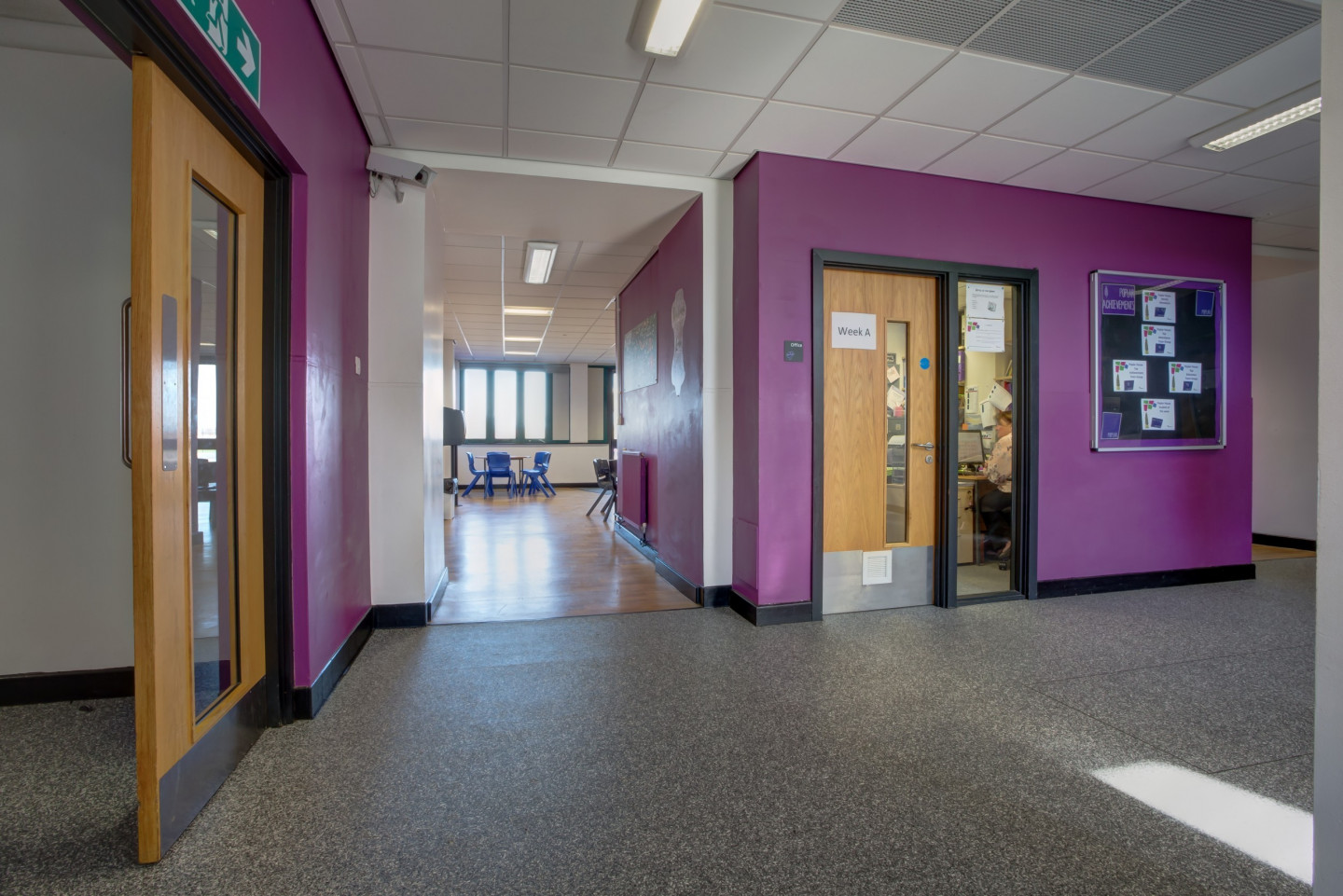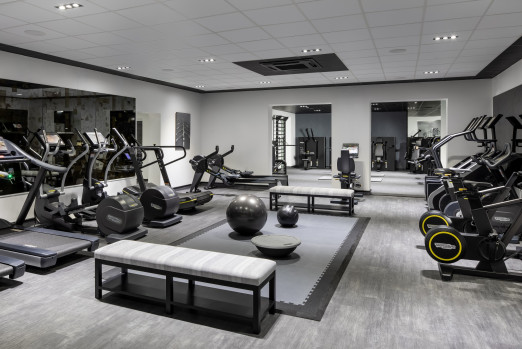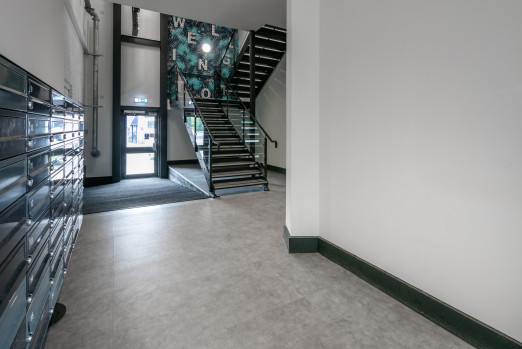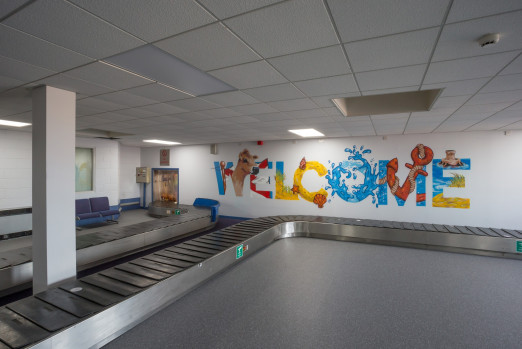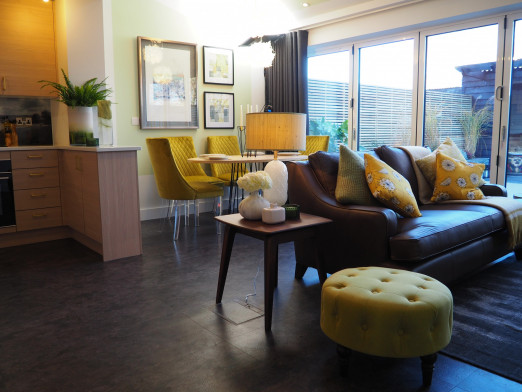A sustainable approach is no longer considered just for eco-minded extremists. As the planet warms, worldwide industry accelerates and rainforests diminish, building methods and building products must conform to rigorous international regulations ranging from raw materials, manufacturing methods and transportation to end-of-life processes. Whole life-cycle analysis therefore plays a key role.
What’s more, a sustainable approach to building, refurbishment and maintenance equates to buildings that have less negative impact on the long-term environment and are more energy and thermally efficient, less costly to run and healthier places for the people that use them. High quality, sustainable products are also generally fit-for-purpose and designed to last longer and perform better, resulting in lower replacement costs and fewer renewal processes.

Better buildings
So how can sustainable flooring products make a difference to building projects? Much has already been achieved by vinyl flooring manufacturers committed to a sustainable future through the research, development and manufacture of environmentally responsible products. Some products contribute towards internationally recognised green building accreditations, while also fulfilling the performance and aesthetic criteria of wide ranging contract and residential projects. For example BRE (Building Research Establishment) is a BREEAM partner which contributes towards a sustainable built environment by targeting performance benchmarks through the rating and certification of products, including floorings.
LEED (Leadership in Energy and Environmental Design) is also an internationally recognised green building certification scheme. Companies which employ some LEED specialists and have products with low emissions (i.e. Floorscore certified products) and recycled content meeting criteria, can qualify for certification.
HQR (High Environmental Quality) is France’s certification scheme for improving indoor quality and lowering detrimental environmental impact. It has seven flooring targets covering construction, comfort and health.

Better floorings
Floorings that are environmentally responsible are therefore also enhanced, as manufacturers remain dedicated to designing floorings that improve hygiene, indoor air quality, safety, comfort, acoustics and decorative surroundings.
All vinyl is 100% recyclable, which is a great starting point. However, some vinyl floorings are now made with a 100% bio-based plasticiser (plasticisers are needed to make vinyl flooring soft and flexible) that is derived from naturally inherent materials like waste from wheat and corn and which give off less Volatile Organic Compounds (VOCs). Already these products are successfully being used in the retail, research, education and healthcare industries, for example.
VOCs are emitted by most materials so some products impact negatively on indoor air quality. There are many international processes to measure and evaluate VOC emissions, generally after 3 and 28 days. These include flooring tests for compliance with ISO 16000-6, ASTM D5116, AgBB protocol, which is a legal requirement for floorings marketed in Germany and Floorscore, the worldwide recognised US certification system to limit values for TVOC and aldehydes. Floorings showing top results will have almost non-existent toxic VOC levels.
The invention of loose-lay floorings that streamline fitting and eliminate adhesives has also contributed to the quality of indoor air. But where adhesive is required, low-emission, solvent-free acrylic adhesives should ideally be used where appropriate.
Responsible manufacturing
Although manufacturers have a duty to make products as responsibly as possible, less than 50% of all manufacturers have implemented ISO 14001 which complies with environmental standards. ISO 14001 certification recognises industrial site management systems that improve environmental performance through actions like reducing water and energy consumption in production processes.
By adopting life cycle analysis, manufacturers go a step further to ensure their products are produced with minimal environmental impact at every stage including raw materials, production, transport, installation, use and end-of-life. The ERFMI (European Resilient Flooring Manufacturer Institute) considers Life Cycle Assessment so its EPDs (Environment Product Declaration) datasheets analyse the impact of floorings during life service. France has developed FDES (Fiches de Données Evnironnementales et Sanitaires) for analysing environmental performance.
Plus, by extending the life of floorings with in-built, high quality protective treatments that allow eco-friendly cleaning methods without harsh chemicals, wax or polish, a flooring can remain ‘green for life ’ and last for many years longer.
Sourcing safe raw materials is however fundamental and using more green-based materials wherever possible is undoubtedly the way forward. REACH is the European Union regulation concerning the registration, evaluation, authorisation and restriction of chemicals. Its aim is to address the production and use of chemical substances and their potential impact on both the environment and human health.
REACH legislation impacts on products sold in Europe by restricting the use of potentially harmful chemicals to be REACH compliant.
End-of-life and new beginnings
A product’s end-of-life is also as important as its beginning and recycling post manufacturing waste and utilising recycled waste from other industries is a positive way of breathing new life into the production of new floorings without using unnecessary resources.
To achieve this, Gerflor was one of the founding members of the first vinyl flooring workshop (AggR) whose factory takes end-of-life floorings from all over Europe and uses a unique process to extract vinyl powder which is incorporated back into new production.
We also supply waste we cannot re-use to other processors and manufacturing industries. Although vinyl is classified as non-hazardous waste, we are involved with partners in the collection and storage of waste generated at large building projects, as a typical installation has off-cuts amounting to around 10% of a typical order.
But we, and others, can always do more by meeting or exceeding standards and by working with other international organisations and forums to continually improve our global approach to sustainability for the benefit of present and future generations.
Learn more about Gerflor solutions, ask for a free sample or contact us to speak to a specialist today by calling 01926 622 600, emailing contractuk@gerflor.com, or visiting gerflor.co.uk for the latest innovations.
